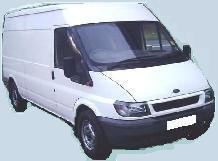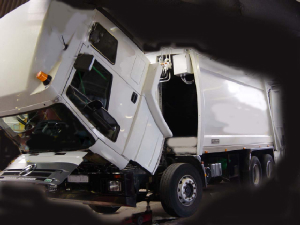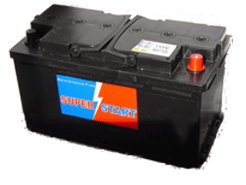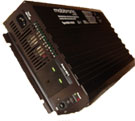
Vehicle diagnostics in Shropshire
Mobile Service - Bosch trained & experienced service engineer in vehicle diagnostics covering Shrewsbury, Oswestry, Telford, Shropshire & Welshpool, Mid Wales areas.
Vehicle Electronic Health Check
A basic vehicle electronic health check diagnostic test involves connecting the vehicle to a diagnostic computer to scan for fault codes which may have been logged by one of the vehicle's onboard computer systems when an operational error is detected.
Vehicle Fault Error Codes
Many modern vehicle mechanical systems are controlled by an electronic control unit (ECU) computer.
The ECU governing operation of a vehicle system may be connected to
Input circuits from sensors
Output circuits operating actuators.
Vehicles have a substantial amount of electrical circuits meaning faults can be complex and difficult to pinpoint.
Fault codes may be referred to as Diagnostic Trouble Codes or DTC's
The vehicle computer system has programmed parameters to monitor inputs from sensors, process information and correct system conditions by outputs to actuators.
If a fault occurs, in theory, the electronic control unit will respond by logging a fault code in ECU memory.
If the fault code is sufficiently important the control unit can activate illumination of a management informaton light (MIL) warning
to alert the driver, and also restrict system operation.
A fault code read differs from a remap.
Retreiving Fault Codes
Fault codes are read on some vehicles using blink codes, most vehicles require diagnostic equipment to scan fault codes.
The vehicle technician is able to connect a diagnostic computer (scan tool) to the vehicle control unit via
the vehicle diagnostic plug and read any stored fault codes which have been logged.
The fault code logged should give a clue to the technician as to which system input or output presents a problem.
Blink Codes
Some older vehicles have a 'blink code' self diagnosis function allowing fault code to be read by counting the flashes of a MIL warning light and looking up the value in a reference table.
No Fault Codes Found ?
On occasion electronic faults can happen faster than the vehicles electronic control unit can see the fault.
Further investigation of a particular system may be necessary using signal test methods with an oscilloscope.
Historical fault codes
Intermittent faults which occur during a driving cycle may be logged as an error fault code.
Fault codes may be logged and stay in control unit (ECU) memory for a considerable time as historical fault codes
relating to faults which have occured in the past and may even have been fixed but the code not cleared.
An exhaust emissions dpf system with stored fault codes may prevent dpf regeneration due to soot accumulation.
Diagnostic procedures logging codes
Random disconnection of electrical connectors in the hunt to find a problem may also cause fault codes to be logged.
Serial Data
Most vehicle diagnostic scan tools can communicate with vehicle systems in real time allowing live data to be read from sensors and actuators.
Live data update is limited by the processing speed of both scan tool and vehicle computer.
Live serial data is communicated via in vehicle networks such as
Controller Area Network bus system (CANBUS)
Local Internet Network (LINbus)
Optical Systems
Data Logging and Freeze Frame Data
Freeze frame data is often logged when a particular fault has occured and the parameters at which the fault has happened are recorded.
Freeze frame data provides a snapshot of control unit sensor and actuator data as seen by the vehicle computer which caused a fault code to be logged.
European On Board Diagnostic (EOBD) Fault codes
EOBD p fault codes rovides basic data relating to engine management systems emissions data on Post year 2000 vehicles in the european market.
EOBD standards apply to:
EOBD Fault codes are sometimes referred to as P.... codes are generally logged for factors which affect vehicle exhaust emissions.
EOBD monitoring has various modes including Freeze frame Data which can be useful to aid diagnostics.
Onboard Diagnostics 2
OBD2 trouble codes consist of a five digit alphanumeric identifier. The first letter identifies the control unit type setting the code:
- P = Powertrain
- B = Body
- C = Chassis
- U = Network
Manufacturer Specific Fault codes
Specific fault codes relating to in depth component functions may not covered by EOBD
Manufacturer specific fault codes require dedicated test equipment to access.
Manufacturer specific fault codes often provide more in depth information than the generic eobd fault codes.
Fault Code Guide
Fault Code Letter Prefix
P =Powertrain
B = Body
C = Chassis
U = Network
Second digit of fault code refers to a generic type
O = Generic EOBD fault code
1 = Manufacturer Specific
Third digit / Letter of Powertrain codes
0 = Fuel Air or Emissions
1 = Fuel system or Air intake system
2 = Fuel system or Air intake system
3 = Ignition or Misfire
4 = Exhaust emissions
5 = Speed signals or Auxilliary inputs
6 = Computer Control unit or Output circuit
7 = Transmission
8 = Transmission
9 = Reserved code for later definition by SAE (Society of Automotive Engineers)
A = Hybrid
B through to F are for future allocation
Third digit of code refers to sub system
Fourth and Fifth Digits of Code :4th and 5th digit identify specific sub system
Setting variable related to particular code
Beware of Fault Codes
Fault codes only indicate an error as seen by an electronic control unit, they do not tell you exactly what is wrong, which part is faulty to repair or replace, or where exactly wiring circuits are open or shorted. A fault code may only log after several driving cycles have taken place.
An ECU supplied with incorrect supply voltage or with a software issue may log spurious fault codes.
Water ingress on to electronic circuit boards may cause corrosion and spurious fault codes.
TSB's or Tech Service Bulletins
Certain fault codes may be listed in manufacturers technical service bulletins as they may occur in a common sequence indicating known failure of a particular component.
Typical Fault codes
PO400
Further investigatiion of a PO400 code,
PO400 code is set due to an exhaust gas recirculation (EGR) system flow problem which could be caused by a blockage or flow
restriction due to stuck egr valve, wiring issue, or blocked exhaust silencer
etc.
Clearing Fault Codes
Fault codes may be cleared from control unit memory using the scan tool.
Fault codes may need to be cleared before a new component will work.
Fault codes may need clearing after repair work has been completed.
Breakdown Services
Many vehicle breakdown services carry on board diagnostic equipment to carry out roadside diagnostic tests.
Communication Protocol
Many manufacturers use different software communication protocols and standards.
International Standards Organisation ISO.
EOBD via 16 pin diagnostic plug
JOBD
OBD1
OBD2
Manufacturer Specific
Society of Automotive Engineering SAE.
No Communication
There are a few reasons why vehicles lose communication with diagnostic test equipment:
No power to ECU
Incorrect power supply voltage
ECU has corrupt software.
ECU circuit board is damaged possibly due to water ingress.
Wiring faults and connections
Diagnostic equipment software does not cover the application.
CARS
OEM names used for reference purposes only.
VANS

TRUCKS

 Autoelectrical Installation
Autoelectrical Installation Air Conditioning Climate Control
Air Conditioning Climate Control Alternators
Alternators Starter Motors
Starter Motors Batteries
Batteries Onboard Power
Onboard Power